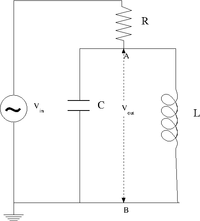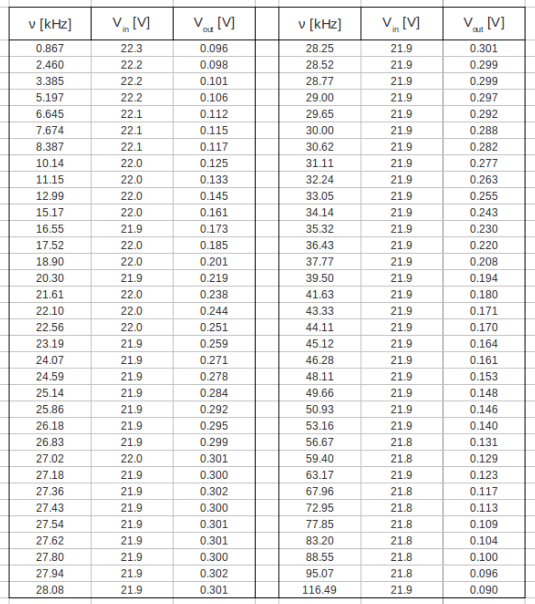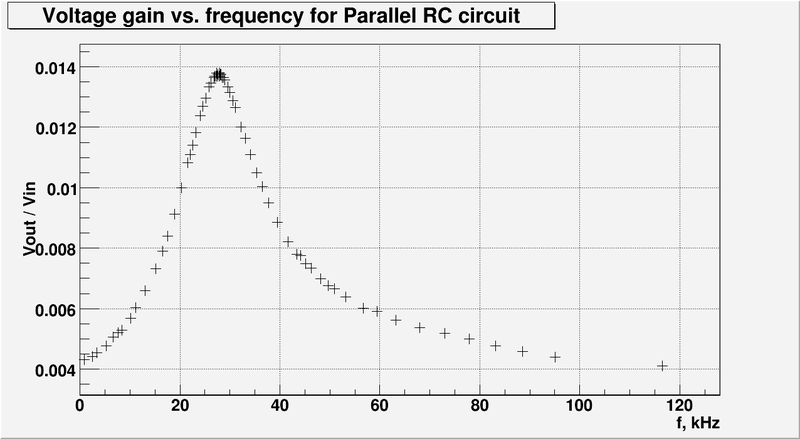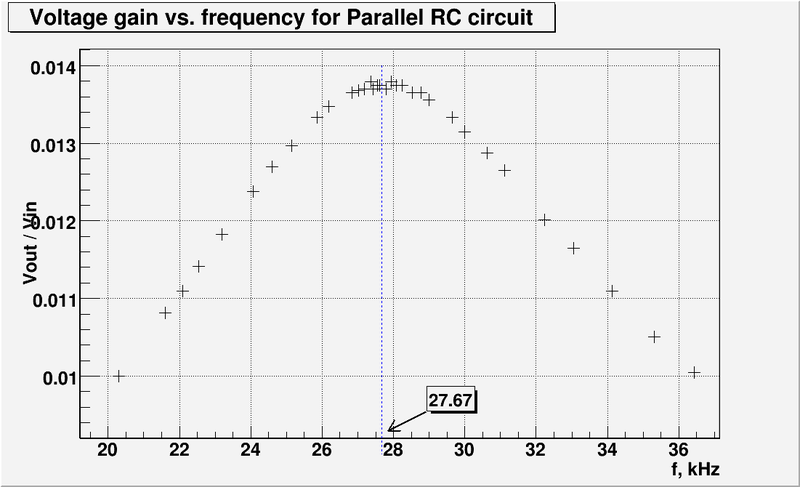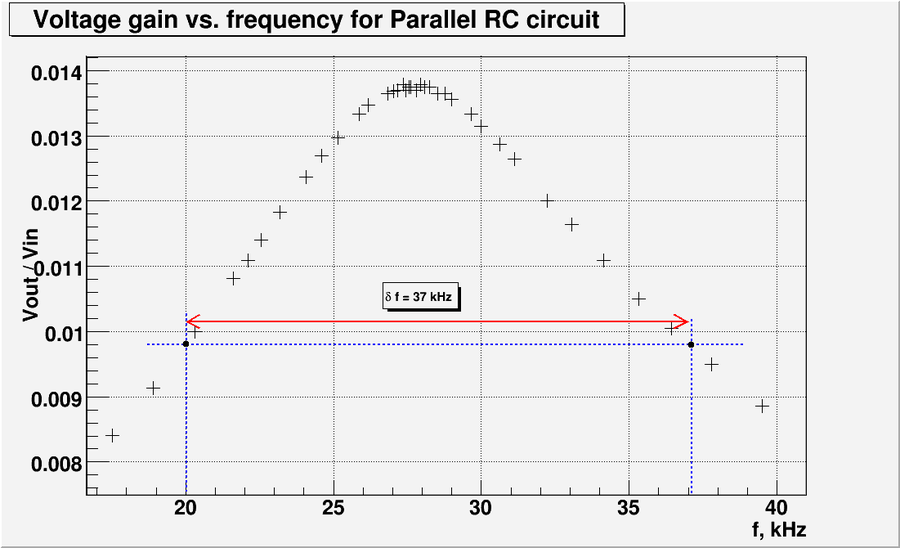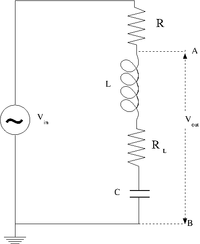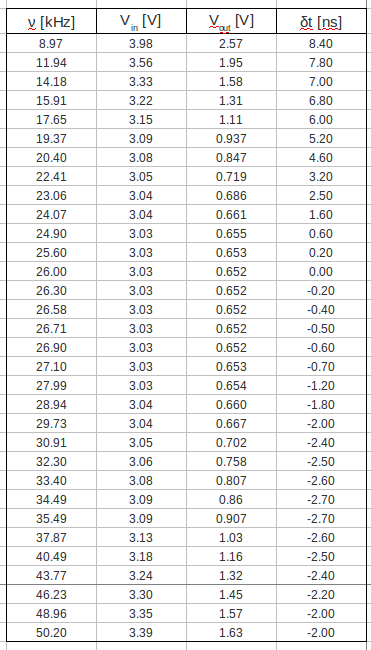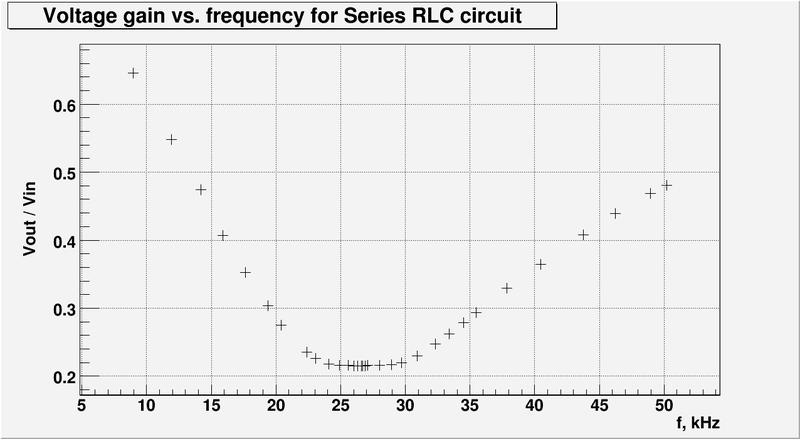Difference between revisions of "Lab 5 RS"
| Line 84: | Line 84: | ||
In the table below are my measurements for voltage gain and phase shift: | In the table below are my measurements for voltage gain and phase shift: | ||
| − | [[File:L5 RLC table.png | | + | [[File:L5 RLC table.png | 400 px]] |
And let's graph the gain as a function of the input voltage frequency: | And let's graph the gain as a function of the input voltage frequency: | ||
| − | [[File:L5 RLC circuit.png | | + | [[File:L5 RLC circuit.png | 800 px]] |
==Measure and Graph the Phase Shift as a function of the oscillating input voltage frequency. (25 pnts)== | ==Measure and Graph the Phase Shift as a function of the oscillating input voltage frequency. (25 pnts)== | ||
Revision as of 06:22, 5 February 2011
- LC Resonance circuits
The LC circuit
Design a parallel LC resonant circuit with a resonant frequency between 50-200 kHz. use = 10 - 100 , R = 1k
I choose the following values for and :
So the resonance frequency is
And
Construct the LC circuit using a non-polar capacitor
Measure the Gain as a function of frequency. (25 pnts)
Compare the measured and theoretical values of the resonance frequency () (10 pnts)
Let's plot the data from table above:
And let's zoom the graph above at resonance frequency:
So the experimentally measured resonance frequency is:
And the predicted value of resonance frequency is:
The error is:
The error is small so I was lucky
Questions
What is the bandwidth of the above circuit? (5 pnts)
From the plot above we have
The bandwidth defined as the width from to where the amplitude of signal drop down to .
At this point . Let's plot this line and calculate the bandwidth.
So the bandwidth of the above circuit is
The RLC cicuit
Design and construct a series LRC circuit
Measure and Graph the Gain as a function of the oscillating input voltage frequency. (25 pnts)
In the table below are my measurements for voltage gain and phase shift:
And let's graph the gain as a function of the input voltage frequency:
